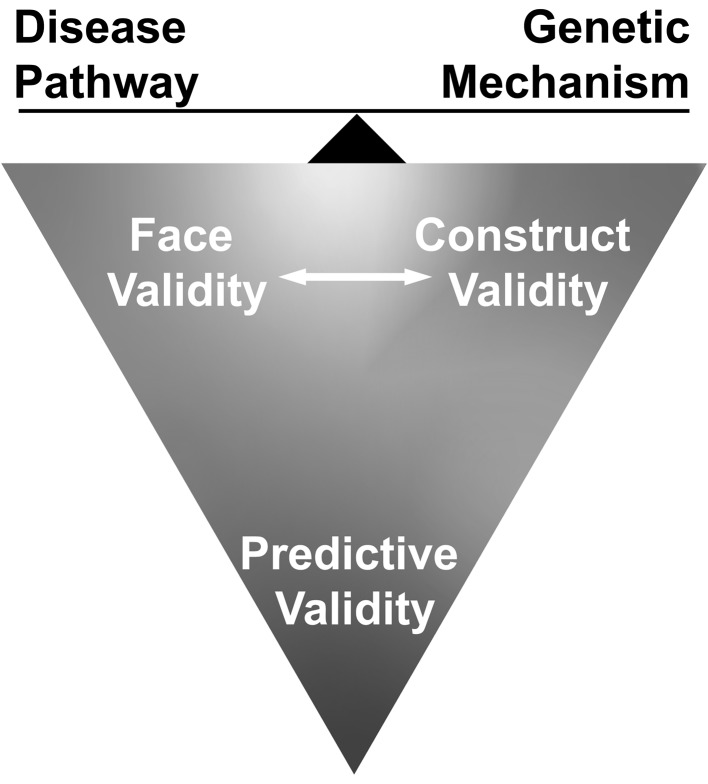Fig. 1.
Model validity. Models can be considered for their face validity, whether they look right; their construct validity, whether they arise through the right mechanism; and their predictive validity, whether the results in the model will translate to humans. None of these measures of validity are absolutes, all are on a spectrum from strong to weak. For preclinical studies, optimizing predictive validity is critical, but whether this optimization depends on improving face or construct validity depends on context. Ideally, there is solid overlap of face, construct, and predictive validity. This is clearly preferable, but perhaps rarely completely attainable. Such overlap creates a convincing argument in preclinical studies, which are then less likely to face skepticism or questions from concerned parties such as regulatory agencies, clinicians, or patients. However, useful information can still be obtained when there is overlap only of face and predictive validity or construct and predictive validity. For example, showing that a candidate therapeutic approach is indeed relevant to a human disease requires a model with some degree of face validity. Similarly, models with strong construct validity can be used to show target engagement and other important aspects of a therapeutic approach, even if the phenotype being studied is not a perfect match to the human condition. Thus, the intended use of the model determines the relative importance of face validity/shared pathophysiology versus construct validity/shared genetic mechanism

